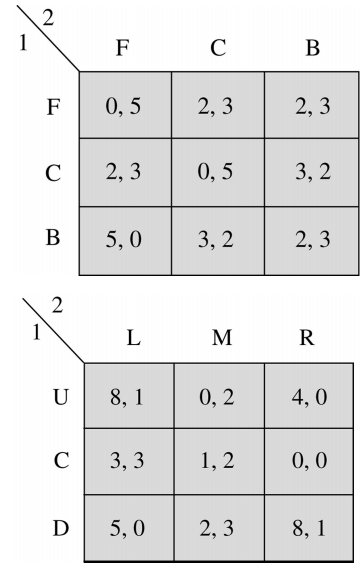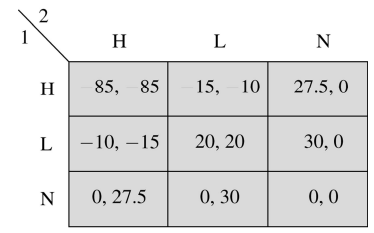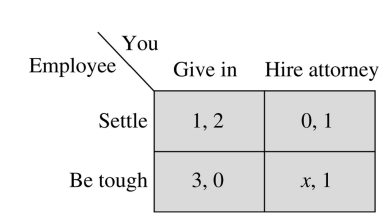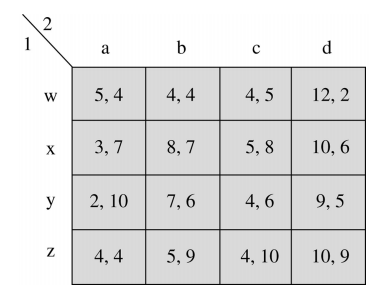Reference no: EM13850823
1. Find the set of undominated strategies in the following games.

2. Find the set of rationalizable strategies for the following game.

3. Suppose that you manage a firm and are engaged in a dispute with one of your employees. The process of dispute resolution is modeled by the following game, where your employee chooses either to "settle" or to "be tough in negotiation", and you chooseeither to "hire an attorney" or to "give in". Suppose the game can be represented as follows: Suppose x is a number that both you and the employee know. For what values of x can you rationalize selecting the strategy "give in"? Explain what your eliefs need to satisfy for this to be the case.

4. Consider a duopoly game in which two firms simultaneously and independently select prices. Assume that prices cannot be negative. Let p1 denote the price set by firm2 1 and p2 let the price set by firm 2. Unlike Bertrand competition (see Chapter 10),we assume that products are differentiated. To be precise, once prices are set by bothfirms, consumers demand 10 - p1 + p2 units from the good that firm 1 produces, andthey demand 10 - p2 + p1 units from the good that firm 2 produces. Assume thateach firm must upply the number of units demanded.
Also assume that the cost of producing qi units is equal to 1 2 · qifor firm i = 1, 2. (a) Write he payoff functions for both players (as functions of their strategies p1 and p2). (b) Characterize each player's best response function (as a function of the price set by the other player). That is, characterize BR1(p2) and BR2(p1).
Are prices strategic substitutes or complements in this game?(c) Can you determine the set of rationalizable strategies in this game by inspection of layers' best-response functions? What is the set of rationalizable strategies? (d) What is the Nash equilibrium in this game? Is the quilibrium an efficient outcome?
5. Consider the following game:

(a) Characterize the set of rationalizable strategies in this game.
(b) Find all the Nash equilibria in the game. Are these equilibria efficient?